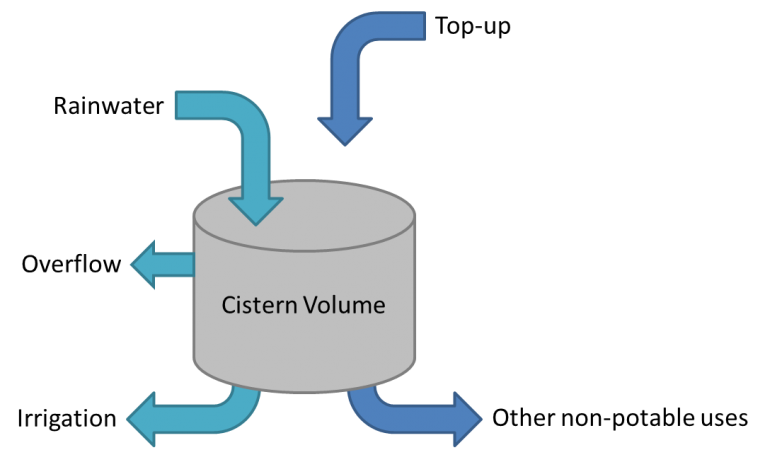Rainwater harvesting: Sizing and modeling
Rapid[edit]
Total cistern volume can be estimated by multiplying the depth of design storm the catchment area. 1 mm of rain over 1 m2 results in 1 L of runoff. For example, the 90th percentile event in Barrie is 26 mm, so every 1 m2 of rooftop will generate 26 L during this storm event. A 2000 m2 building would generate 54,000 L of runoff. The designers have three choices:-
- Construct a suitably sized concrete vault underground to capture all of the water
- Alter the slope of the roof to create two or more catchments, the smaller catchments may be diverted to plastic or fiberglass cisterns
- Design 1. or 2. Slightly undersized for this storm, but with additional capacity in an infiltration system to capture overflow. Examples include bioretention cells or infiltration chambers.
<panelInfo>
</panelInfo>
STEP Rainwater Harvesting Tool[edit]
The Sustainable Technologies Evaluation Program have produced a rainwater harvesting design and costing tool specific to Ontario. The tool is in a simple to use Excel format and is free to download.
The Treatment Train Tool[edit]
Once the size of cistern has been determined, it can easily be modelled in many open source and proprietary applications.
In addition to the cistern size, modelling requires
<btnPrimary>The Treatment Train Tool</btnPrimary>
See Also[edit]
This list will be other 'Sizing and Modelling' pages
External Links[edit]
| SEND US YOUR QUESTIONS & FEEDBACK ABOUT THIS PAGE |
